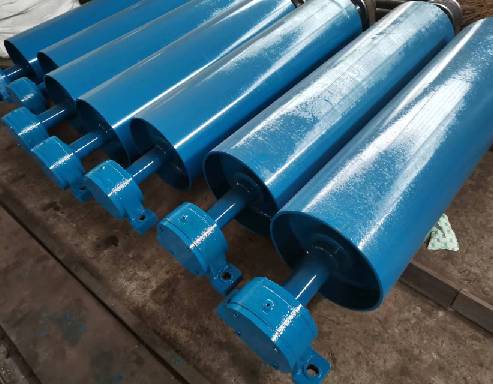 Afrikaans
Afrikaans  Albanian
Albanian  Amharic
Amharic  Arabic
Arabic  Armenian
Armenian  Azerbaijani
Azerbaijani  Basque
Basque  Belarusian
Belarusian  Bengali
Bengali  Bosnian
Bosnian  Bulgarian
Bulgarian  Catalan
Catalan  Cebuano
Cebuano  Corsican
Corsican  Croatian
Croatian  Czech
Czech  Danish
Danish  Dutch
Dutch  English
English  Esperanto
Esperanto  Estonian
Estonian  Finnish
Finnish  French
French  Frisian
Frisian  Galician
Galician  Georgian
Georgian  German
German  Greek
Greek  Gujarati
Gujarati  Haitian Creole
Haitian Creole  hausa
hausa  hawaiian
hawaiian  Hebrew
Hebrew  Hindi
Hindi  Miao
Miao  Hungarian
Hungarian  Icelandic
Icelandic  igbo
igbo  Indonesian
Indonesian  irish
irish  Italian
Italian  Japanese
Japanese  Javanese
Javanese  Kannada
Kannada  kazakh
kazakh  Khmer
Khmer  Rwandese
Rwandese  Korean
Korean  Kurdish
Kurdish  Kyrgyz
Kyrgyz  Lao
Lao  Latin
Latin  Latvian
Latvian  Lithuanian
Lithuanian  Luxembourgish
Luxembourgish  Macedonian
Macedonian  Malgashi
Malgashi  Malay
Malay  Malayalam
Malayalam  Maltese
Maltese  Maori
Maori  Marathi
Marathi  Mongolian
Mongolian  Myanmar
Myanmar  Nepali
Nepali  Norwegian
Norwegian  Norwegian
Norwegian  Occitan
Occitan  Pashto
Pashto  Persian
Persian  Polish
Polish  Portuguese
Portuguese  Punjabi
Punjabi  Romanian
Romanian  Russian
Russian  Samoan
Samoan  Scottish Gaelic
Scottish Gaelic  Serbian
Serbian  Sesotho
Sesotho  Shona
Shona  Sindhi
Sindhi  Sinhala
Sinhala  Slovak
Slovak  Slovenian
Slovenian  Somali
Somali  Spanish
Spanish  Sundanese
Sundanese  Swahili
Swahili  Swedish
Swedish  Tagalog
Tagalog  Tajik
Tajik  Tamil
Tamil  Tatar
Tatar  Telugu
Telugu  Thai
Thai  Turkish
Turkish  Turkmen
Turkmen  Ukrainian
Ukrainian  Urdu
Urdu  Uighur
Uighur  Uzbek
Uzbek  Vietnamese
Vietnamese  Welsh
Welsh  Bantu
Bantu  Yiddish
Yiddish  Yoruba
Yoruba  Zulu
Zulu Innovative Self-Cleaning Tail Pulley Design for Enhanced Conveyor Efficiency and Maintenance
Self-Cleaning Tail Pulleys Enhancing Conveyor Efficiency
In various industrial settings, conveyor systems play a crucial role in transporting materials from one place to another. However, one of the persistent challenges that operators face is material buildup on the tail pulleys of these systems. The accumulation of sticky materials can lead to several operational issues, including increased wear and tear, reduced efficiency, and potential system failures. To mitigate these challenges, self-cleaning tail pulleys have emerged as a revolutionary solution that enhances the performance and longevity of conveyor systems.
Understanding Tail Pulleys
Tail pulleys, often located at the end of a conveyor system, are critical components that ensure the belt is maintained under tension and that the materials are effectively moved along the conveyor. However, due to the nature of the materials being transported—often sticky, wet, or fine particles—tail pulleys are prone to material accumulation. This buildup can create a friction layer that leads to premature wear of the conveyor belt and other components, resulting in costly downtime and maintenance.
The Concept of Self-Cleaning Tail Pulleys
Self-cleaning tail pulleys are designed to address the problem of material accumulation directly. These pulleys integrate specific design features that facilitate the removal of build-up as materials are conveyed. Various mechanisms are employed in the design of these pulleys, including
1. Sloped Surfaces The pulleys are often constructed with a tapered or angled surface that encourages material to slide off rather than adhere to the pulley. This simple yet effective design discourages debris from sticking to the surface.
2. Vibration Some self-cleaning tail pulleys are equipped with vibrational technologies that shake off any accumulated materials. The gentle vibrations during operation can prevent the build-up from solidifying, allowing it to be easily dislodged.
3. Rotational Features Certain designs include rotating blades or scrapers that actively remove accumulated material as the pulley turns. These mechanical features work in real-time to ensure that the tail pulley remains clean throughout the operational process.
self cleaning tail pulley

4. Water Sprays In environments where material is particularly sticky, some systems utilize water spray mechanisms that wash away debris as it accumulates. This method not only cleans the pulley but also helps keep the transported materials flowing smoothly.
Benefits of Self-Cleaning Tail Pulleys
The implementation of self-cleaning tail pulleys offers numerous advantages for industries that rely on conveyor systems
.1. Reduced Maintenance Costs By preventing material build-up, self-cleaning tail pulleys significantly reduce the need for frequent maintenance and cleaning. This leads to lower operational costs and less downtime.
2. Increased Operational Efficiency A clean tail pulley ensures that the conveyor operates at optimal efficiency. It minimizes friction and enhances the performance of the entire conveyor system, leading to higher productivity levels.
3. Extended Equipment Life By reducing the wear and tear associated with material buildup, self-cleaning tail pulleys contribute to the longevity of the conveyor system and its components, ensuring long-term reliability and performance.
4. Improved Safety Excessive material buildup can lead to safety hazards, such as slipping or unexpected equipment failures. Self-cleaning mechanisms enhance safety by maintaining a clear operating environment.
Conclusion
With the introduction of self-cleaning tail pulleys, industries can tackle one of the most persistent issues in conveyor system operation material buildup. By enhancing efficiency, reducing maintenance needs, and improving safety, these innovative solutions represent a significant advancement in conveyor technology. As industries continue to evolve, the adoption of self-cleaning features will undoubtedly play a pivotal role in driving productivity and operational excellence.
-
Revolutionizing Conveyor Reliability with Advanced Rubber Lagging PulleysNewsJul.22,2025
-
Powering Precision and Durability with Expert Manufacturers of Conveyor ComponentsNewsJul.22,2025
-
Optimizing Conveyor Systems with Advanced Conveyor AccessoriesNewsJul.22,2025
-
Maximize Conveyor Efficiency with Quality Conveyor Idler PulleysNewsJul.22,2025
-
Future-Proof Your Conveyor System with High-Performance Polyurethane RollerNewsJul.22,2025
-
Driving Efficiency Forward with Quality Idlers and RollersNewsJul.22,2025





























